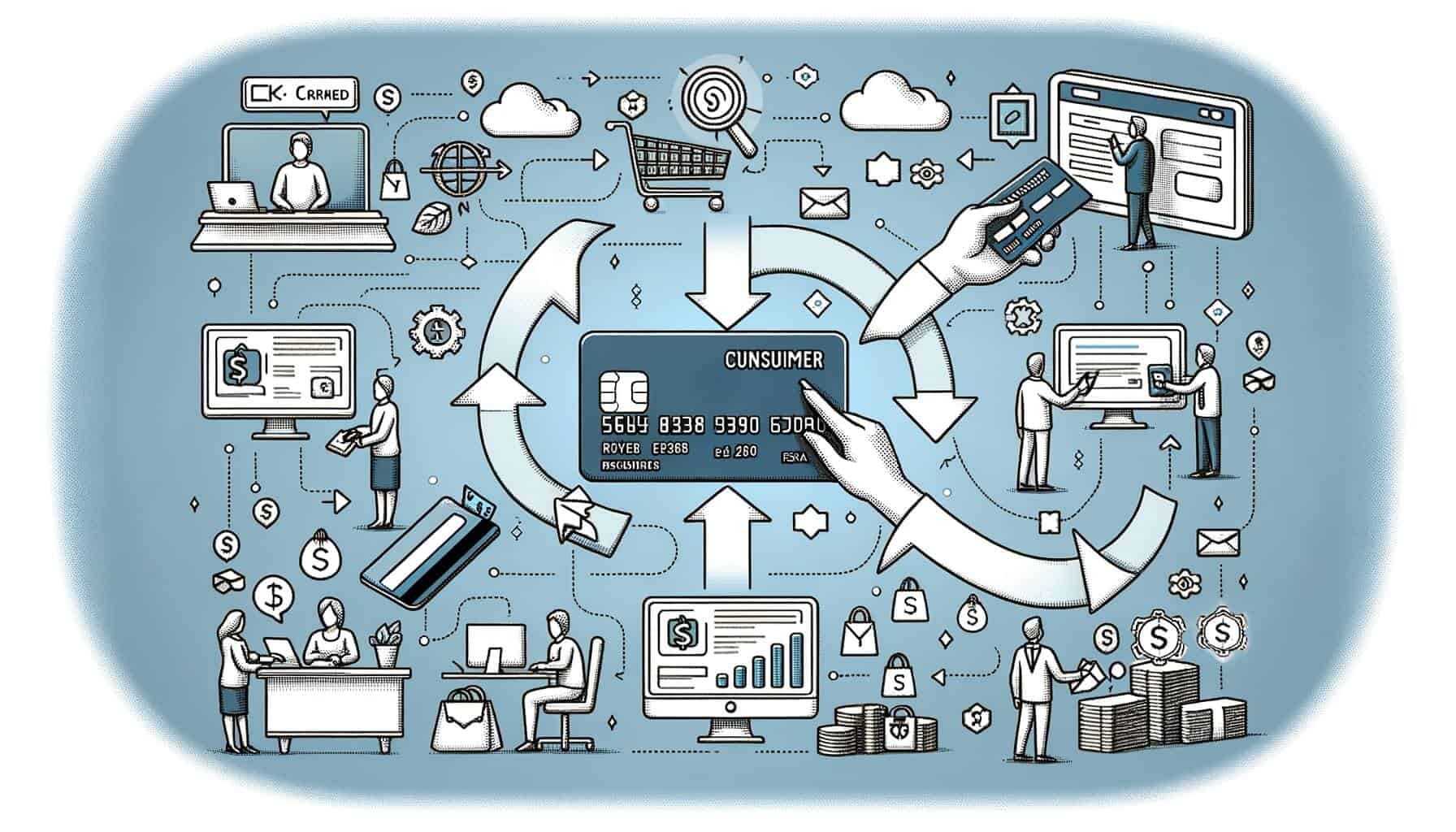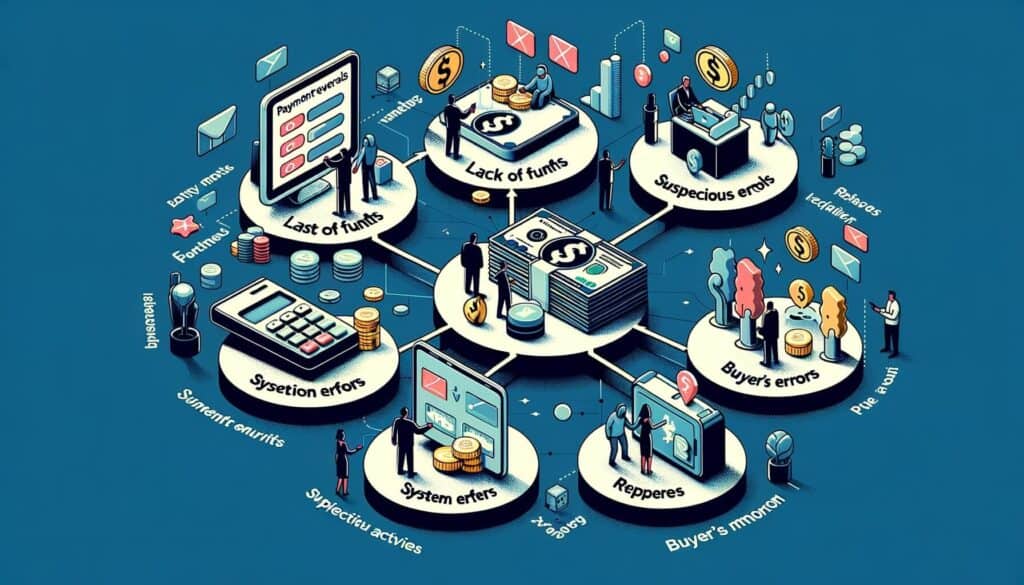
By Amanda Hoglund December 26, 2024
In today’s digital age, online transactions have become an integral part of our daily lives. Whether it’s purchasing goods and services or transferring funds to friends and family, the convenience of electronic payments cannot be denied. However, there are instances when these transactions may not go as planned, leading to the need for a payment reversal. In this comprehensive guide, we will explore the concept of payment reversals, understand how they work, and discuss the common reasons behind them.
We will also delve into the process of initiating a payment reversal, explore how payment reversals work in different payment systems, and examine the role of banks and payment processors in facilitating these reversals. Additionally, we will highlight the potential consequences and risks associated with payment reversals, and provide valuable tips for avoiding them. By the end of this article, you will have a thorough understanding of payment reversals and their importance in the world of electronic transactions.
Understanding the Concept of Payment Reversals
Payment reversals, also known as chargebacks or payment disputes, refer to the process of reversing a transaction and returning the funds to the payer. This can occur when a customer disputes a charge on their credit card statement or when a payment is made in error. They are typically initiated by the payer, who requests their bank or payment processor to reverse the transaction. The funds are then returned to the payer’s account, and the merchant or recipient of the payment may be required to provide evidence to support their case.
Payment reversals serve as a form of consumer protection, allowing individuals to dispute unauthorized or fraudulent charges, resolve billing errors, or seek refunds for unsatisfactory products or services. They provide a safety net for consumers, ensuring that they are not held responsible for transactions that they did not authorize or benefit from. However, it can also be misused by unscrupulous individuals to obtain goods or services without paying for them, leading to potential losses for merchants and service providers.
Common Reasons for Payment Reversals

There are several common reasons why payment reversals occur. Understanding these reasons can help both consumers and merchants navigate the complexities of electronic transactions and minimize the occurrence of reversals. Let’s explore some of the most prevalent reasons for payment reversals:
- Unauthorized or fraudulent transactions: One of the primary reasons for payment reversals is unauthorized or fraudulent transactions. This can occur when a customer’s credit card information is stolen or when their account is compromised. In such cases, the customer may dispute the charge and request a reversal to prevent any financial loss.
- Billing errors: Billing errors can also lead to payment reversals. These errors may include incorrect amounts charged, duplicate charges, or charges for products or services that were not received. Customers have the right to dispute these charges and request a reversal to rectify the billing error.
- Dissatisfaction with products or services: Customers may initiate payment reversals if they are dissatisfied with the quality of products or services they have received. This can include receiving damaged goods, poor customer service, or not receiving the promised benefits of a service. In such cases, customers may request a reversal to obtain a refund.
- Subscription cancellations: Subscription-based services often require customers to provide their credit card information for recurring payments. If a customer wishes to cancel their subscription but continues to be charged, they may dispute the charges and request a reversal.
- Technical issues: Technical glitches or errors during the payment process can also result in payment reversals. For example, if a customer is charged multiple times due to a system error, they may request a reversal for the additional charges.
- Identity theft: In cases of identity theft, where a person’s personal information is used without their consent, it may be necessary to reverse fraudulent transactions made in their name.
It is important to note that while payment reversals can provide a means of resolving disputes and protecting consumers, they can also have negative consequences for merchants and service providers. Excessive this can lead to financial losses, damage to reputation, and even the suspension of payment processing capabilities. Therefore, it is crucial for businesses to understand the process of initiating a payment reversal and take necessary measures to prevent them.
The Process of Initiating a Payment Reversal

The process of initiating a payment reversal varies depending on the payment system and the entities involved. However, there are some general steps that are typically followed when requesting a reversal. Let’s take a closer look at the process:
- Contact the bank or payment processor: The first step in initiating a payment reversal is to contact the bank or payment processor through which the transaction was made. This can usually be done by calling the customer service helpline or visiting the bank’s website.
- Provide necessary information: When contacting the bank or payment processor, the customer will be required to provide specific information related to the transaction. This may include the transaction date, amount, and any supporting documentation or evidence to support their case.
- Dispute the charge: The customer will need to clearly state the reason for disputing the charge and request a payment reversal. This can be done verbally during a phone call or through an online dispute form provided by the bank or payment processor.
- Investigation and evidence submission: Once the dispute is initiated, the bank or payment processor will conduct an investigation to determine the validity of the claim. During this process, both the customer and the merchant may be required to provide additional evidence or documentation to support their case.
- Resolution and decision: Based on the evidence provided, the bank or payment processor will make a decision regarding the payment reversal. If the claim is found to be valid, the funds will be reversed and returned to the customer’s account. If the claim is deemed invalid, the customer will be notified, and the reversal will not be processed.
It is important to note that the process of initiating a payment reversal can take time, and the outcome may not always be favorable for the customer. Therefore, it is crucial for customers to provide accurate and detailed information to support their claim and increase the chances of a successful reversal.
How Payment Reversals Work in Different Payment Systems

Payment reversals can occur in various payment systems, each with its own set of rules and procedures. Let’s explore how payment reversals work in some of the most commonly used payment systems:
- Credit cards: Credit card transactions are one of the most common forms of electronic payments. In the case of payment reversals, customers can contact their credit card issuer and dispute a charge. The credit card issuer will then initiate an investigation and may temporarily reverse the charge while the investigation is ongoing. If the claim is found to be valid, the charge will be permanently reversed, and the funds will be returned to the customer’s account. If the claim is deemed invalid, the customer will be notified, and the reversal will not be processed.
- Debit cards: Similar to credit cards, customers can dispute charges made on their debit cards by contacting their bank. The bank will initiate an investigation and may temporarily reverse the charge during this process. If the claim is found to be valid, the charge will be permanently reversed, and the funds will be returned to the customer’s account. If the claim is deemed invalid, the customer will be notified, and the reversal will not be processed.
- Online payment platforms: Online payment platforms such as PayPal, Venmo, and Stripe also facilitate payment reversals. Customers can log into their accounts, navigate to the transaction in question, and initiate a dispute. The payment platform will then conduct an investigation and make a decision regarding the reversal. If the claim is found to be valid, the funds will be reversed and returned to the customer’s account. If the claim is deemed invalid, the customer will be notified, and the reversal will not be processed.
- Bank transfers: Bank transfers, also known as wire transfers, can be reversed in certain circumstances. If a customer initiates a bank transfer and realizes that it was made in error or without their consent, they can contact their bank and request a reversal. However, it is important to note that bank transfers are generally considered to be irreversible, and the chances of a successful reversal may be limited.
The Role of Banks and Payment Processors in Payment Reversals

Banks and payment processors play a crucial role in facilitating payment reversals and ensuring a smooth resolution process. Let’s explore the role of these entities in more detail:
- Banks: Banks act as intermediaries between customers and merchants in the payment reversal process. When a customer initiates a payment reversal, the bank is responsible for conducting an investigation, gathering evidence, and making a decision regarding the reversal. Banks have specific departments or teams dedicated to handling payment disputes and ensuring a fair resolution for all parties involved. They also have the authority to temporarily reverse charges during the investigation process to protect the customer’s funds.
- Payment processors: Payment processors, such as Stripe, Square, and PayPal, play a crucial role in facilitating electronic transactions and handling payment reversals. These companies act as intermediaries between merchants and banks, processing payments and ensuring the secure transfer of funds. When a customer initiates a payment reversal, the payment processor is responsible for conducting an investigation, gathering evidence, and making a decision regarding the reversal. Payment processors also have the authority to temporarily reverse charges during the investigation process to protect the customer’s funds.
Both banks and payment processors have established guidelines and procedures for handling payment reversals. These guidelines ensure that the reversal process is fair and transparent, protecting the interests of both customers and merchants. However, it is important to note that the specific policies and procedures may vary between different banks and payment processors. Therefore, it is crucial for customers and merchants to familiarize themselves with the guidelines of their respective banks or payment processors to ensure a smooth resolution process.
Potential Consequences and Risks of Payment Reversals
While payment reversals serve as a means of resolving disputes and protecting consumers, they can also have negative consequences for merchants and service providers. Let’s explore some of the potential consequences and risks associated with payment reversals:
- Financial losses: Excessive payment reversals can result in significant financial losses for merchants and service providers. When a payment is reversed, the funds are returned to the customer, and the merchant may be left without payment for the goods or services provided. This can be particularly damaging for small businesses or individuals who rely on a steady cash flow to sustain their operations.
- Damage to reputation: Payment reversals can also have a negative impact on a merchant’s reputation. Excessive reversals can signal to banks and payment processors that the merchant may be engaging in fraudulent or unethical practices. This can lead to the suspension or termination of payment processing capabilities, making it difficult for the merchant to accept electronic payments in the future. Additionally, customers may be hesitant to engage in transactions with a merchant that has a history of payment reversals, leading to a loss of trust and potential business opportunities.
- Administrative burden: Dealing with payment reversals can be time-consuming and administratively burdensome for merchants and service providers. The process of gathering evidence, responding to inquiries, and providing documentation can be complex and require significant resources. This can divert the merchant’s attention away from core business activities and result in additional costs.
- Increased fees and penalties: In some cases, banks and payment processors may impose fees or penalties on merchants for excessive payment reversals. These fees can vary depending on the specific policies of the bank or payment processor and can further contribute to the financial burden faced by merchants.
To mitigate the potential consequences and risks associated with payment reversals, merchants and service providers should take proactive measures to prevent them. This includes implementing robust fraud detection and prevention systems, providing clear and transparent refund policies, and maintaining open lines of communication with customers to address any concerns or issues promptly.
Tips for Avoiding Payment Reversals
While payment reversals cannot be completely eliminated, there are several steps that both consumers and merchants can take to minimize their occurrence. Let’s explore some valuable tips for avoiding payment reversals:
For Consumers:
- Review transactions regularly: Regularly reviewing credit card and bank statements can help identify any unauthorized or fraudulent charges promptly. If any discrepancies are found, contact the bank or payment processor immediately to dispute the charge and request a reversal.
- Keep records and documentation: Keeping records of transactions, receipts, and any communication with merchants can be valuable when disputing a charge. These records can serve as evidence to support the claim and increase the chances of a successful reversal.
- Read terms and conditions: Familiarize yourself with the terms and conditions of the payment system or platform you are using. Understanding the dispute resolution process and the specific guidelines for payment reversals can help you navigate the process more effectively.
- Communicate with the merchant: If you are dissatisfied with a product or service, try to resolve the issue directly with the merchant before initiating a payment reversal. Open lines of communication can often lead to a mutually satisfactory resolution without the need for a reversal.
For Merchants
- Provide clear refund policies: Clearly communicate your refund policies to customers to manage their expectations. Make sure the policies are easily accessible on your website or at the point of sale. Transparent refund policies can help reduce the likelihood of payment reversals resulting from customer dissatisfaction.
- Maintain accurate records: Keep detailed records of transactions, receipts, and any communication with customers. These records can be invaluable when responding to payment reversals and providing evidence to support your case.
- Implement fraud detection and prevention measures: Implement robust fraud detection and prevention systems to minimize the occurrence of unauthorized or fraudulent transactions. This can include using secure payment gateways, requiring additional verification for high-risk transactions, and monitoring for suspicious activity.
- Provide excellent customer service: Providing excellent customer service can go a long way in preventing payment reversals. Address customer concerns promptly, resolve issues in a timely manner, and maintain open lines of communication to build trust and loyalty.
By following these tips, both consumers and merchants can minimize the occurrence of payment reversals and ensure a smoother and more secure transaction process.
Frequently Asked Questions
Q1. Can I dispute a payment reversal?
Yes, as a customer, you have the right to dispute a payment reversal if you believe it was made in error or if you have evidence to support your claim. Contact your bank or credit card company to initiate the dispute process.
Q2. How long does a payment reversal take?
The duration of a payment reversal can vary depending on several factors, including the complexity of the case and the policies of the financial institution. In some cases, it can take a few days, while in others, it may take several weeks.
Q3. Can a payment reversal be reversed?
In certain circumstances, a payment reversal can be reversed. For example, if new evidence emerges that supports the merchant’s case, the financial institution may reverse the refund and reinstate the charge.
Q4. Can a payment reversal affect my credit score?
Payment reversals themselves do not directly impact your credit score. However, if a payment reversal leads to unpaid debts or delinquencies, it can have a negative impact on your credit score.
Conclusion
Payment reversals are an essential part of the modern payment ecosystem, ensuring fair and secure transactions for both consumers and businesses. Understanding the concept of payment reversals, the reasons for their occurrence, and the processes involved is crucial for all parties involved in electronic payments.
By being aware of the potential consequences and risks associated with payment reversals, individuals and businesses can take necessary precautions to minimize their impact. Ultimately, payment reversals contribute to building trust and confidence in the digital payment landscape, enabling smooth and reliable transactions for all.